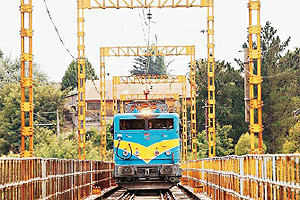Our country has an enormous tourist potential. The expansive territory contains countless beautiful locations, which combine the bareness of the world’s driest desert with the majestic peaks of the Andes mountains, the long Pacific coast and the immensity of the glaciers.
These one of a kind destinations also offer a series of activities. Tourist infrastructure has grown in Chile at an astounding rate, providing visitors with different services of international quality, from lodging to expeditions through the territory, hiking, underwater exploration, and many more.
San Pedro de Atacama, Valparaiso, Easter island and the Torres del Paine are some of the most visited spots, but there are new destinations that have recently been successful. The Colchagua Wine Route, the Chilean hiking path (which spans most of the length of our territory) and even expeditions that tour the world’s southernmost point, with the possibility of visiting all the way to Antarctica, have diversified our national offer, all with the final objective of placing Chile’s name on the list of the most attractive places in the world to visit.
Heritage sites
To this date, our country has five of the 815 sites found worldwide that have been appointed as World Heritage Sites by the United Nations Educational, Scientific and Cultural Organization (Unesco). The importance of each one of them lies in the fact that they all have outstanding universal value, be it for their historical or natural relevance or for their architectural, aesthetic or scientific significance.
The first national spot included on the World Heritage list was the Rapa Nui National Park, found on Easter island.
The site was registered at the meeting held by UNESCO in Berlin, in December of 1995, and the reasons for its appointment were that it corresponded to a testimony of man’s ingenuity for creating exceptional work and because it belonged to a unique culture, in addition to being a natural environment of unparalleled beauty.
After this, it was the turn of the churches of Chiloe, appointed World Heritage sites by UNESCO in the year 2000. Sixteen wooden constructions reached this important category, standing out as a clear example of the fusion between indigenous and Spanish tradition, captured in a particular wooden architecture. The locals built the churches themselves along with the missionaries, thus becoming a clear witness of the dialogue held between both cultures.
In 2003, Valparaiso’s historical district was included on the World Heritage list for its special urban development and for being a testimony –through its constructions and culture- of the bustling movement of foreigners though the area and the tireless commercial exchange taken place at the end of the XIX century.
In July of 2005, Chile had the privilege of receiving a new World Heritage Site. This time, the Humberstone and Santa Laura saltpeter works were included on the list. The reasons behind this distinction were that they were palpable and invaluable evidence of the region’s industrial development -which had a booming growth under the wing of saltpeter extraction- and the everyday lives that took place under these strange conditions. The unkempt state the facilities of both saltpeter works were in also made them be included on the list for endangered sites.
The Sewell mining camp was the most recent Chilean heritage site to be included on the world list in July of 2006. This place, also known as “the city of stairs”, has a unique architecture that perfectly fits the conditions were it was set: amidst the Andes mountains. The particular way of life led by its inhabitants and the customs that took place there (a combination of the Chilean workers’ traditions with the traditions of the Americans that owned the ore) are just a few of the merits that were enough for this Chilean representative of modern industrial heritage.








